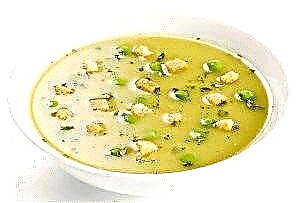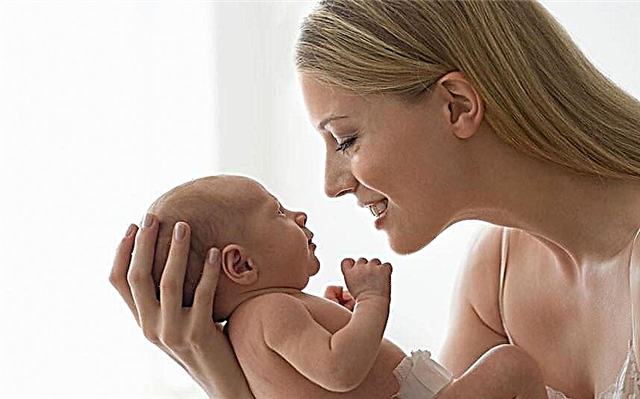Parents are usually worried when a peculiar crust appears on their child's head. A mother can notice such a small build-up even in the hospital. In some babies, these crusts persist for up to a year, and, although they do not cause any inconvenience to the children themselves, parents still strive to get rid of dubious growths. That is why all mothers should arm themselves with information about what crusts on the head of babies are, whether they are harmful and how to remove them.

Causes of crusts
Crusts are common in infants. Perhaps every second baby has seborrheic crusts, regardless of whether there are hairs on the head or not. True, unlike real seborrheic crusts, infant crusts have nothing to do with the disease. In babies, the formation of crusts on the skin is a natural process, the root of which is the poor work of the sebaceous and sweat glands. Some babies have dense yellow crusts, others have thin white, like sticky dandruff. This is an individual feature, but by its origin it is one and the same phenomenon.
While crusting is a natural process, some parenting actions can increase crusting:
- Overheating. Babies who are wrapped up even in warmth and put on a hat sweat more. From this, the crusts are formed more actively.
- Frequent shampooing. The baby's skin does not yet have reliable protection, so frequent shampooing or soaping only aggravates the situation.
- Use of unsuitable household chemicals. Shampoos and washing gels containing dyes, fragrances and other "chemicals" are not suitable for babies. Children often have an allergy to such funds, which increases the formation of seborrheic crusts.
The scale of the disaster
The crusts on the baby's head are absolutely harmless. Its only drawback is aesthetic. Sometimes it is believed that these scabs interfere with hair growth. This is just another delusion. And yet, most mothers prefer to remove the growths, because if this is not done, they themselves do not pass long enough. (See the article about why does the child's hair grow poorly)
How to remove
The most effective way to remove crusts is mechanical removal. This should be done according to a certain method. Do not scrape them off with your fingernail or a sharp object - this can injure delicate skin. It is also impossible to remove the crusts without soaking them first.
To eliminate crusts from the baby's head, you will need cosmetic or sterile vegetable oil (you can use liquid paraffin), a thin cap, shampoo and a comb with natural bristles.
- The areas of the scalp on which crusts have appeared should be liberally lubricated with oil and held for 20-30 minutes. For better softening, you can put a thin knitted hat on the head.
- When the allotted time for "oiling" is over, you need to carefully remove the crusts with a comb, making movements in different directions.
- Oil from the head and hair is washed off with baby shampoo. When washing your hair, you can additionally massage the crusted areas with your fingers.
- After bathing, when there is no oil or shampoo left on the head, you can once again "walk" the comb to remove the separated residues.
You can repeat this procedure, as well as wash your baby's hair in general, no more than 2 times a week.
(Memo. Clickable)

About anti-crust shampoo
Instead of the "oil treatment", you can use a special anti-crust shampoo. Not all manufacturers have such funds. In the matter of choosing a shampoo, you can trust the recommendations of mothers in online communities and the reviews of friends. Shampoo, of course, will not get rid of combing out. In the fight against crusts, shampoo replaces oil, since it contains softening components. Unlike oil, it needs to be foamed on the head and washed off after 2-3 minutes, and after washing off, start combing out the exfoliated crusts. The effectiveness of this method is difficult to assess objectively. Apparently, personal characteristics play a big role, because for some shampoo helps in several applications, while for others it does not help for months.
Prevention of the appearance
Preventive actions, if they do not completely relieve parents of the problem of crusts on the baby's head, then at least reduce their spread.
- Do not overheat the baby. Always remove your hat in a warm room. At home, it is not always advisable even for a newborn to be in a hat.
- Maintain the humidity level.
- Do not be fanatic about washing the baby's head. You can wash with detergent 1-2 times a week.
- Carefully select household chemicals for the crumbs so as not to provoke allergies and dermatitis.
- Use a comb every day, even if you don't have much to comb. Massage with a natural bristle comb is a good prevention of crust formation.
Seborrheic crusts on the head of the baby are not as serious a problem as mothers might think. If the crusts cannot be removed in any way, you can contact a specialist, but in most cases this trouble does not require medical intervention and serious measures.
We read on the topic of care:
- How and what to wash your child's hair with: 8 simple but important tips for parents
- Why does the child have peeling skin on the head and body
- Skin care
- Hygiene of newborns



